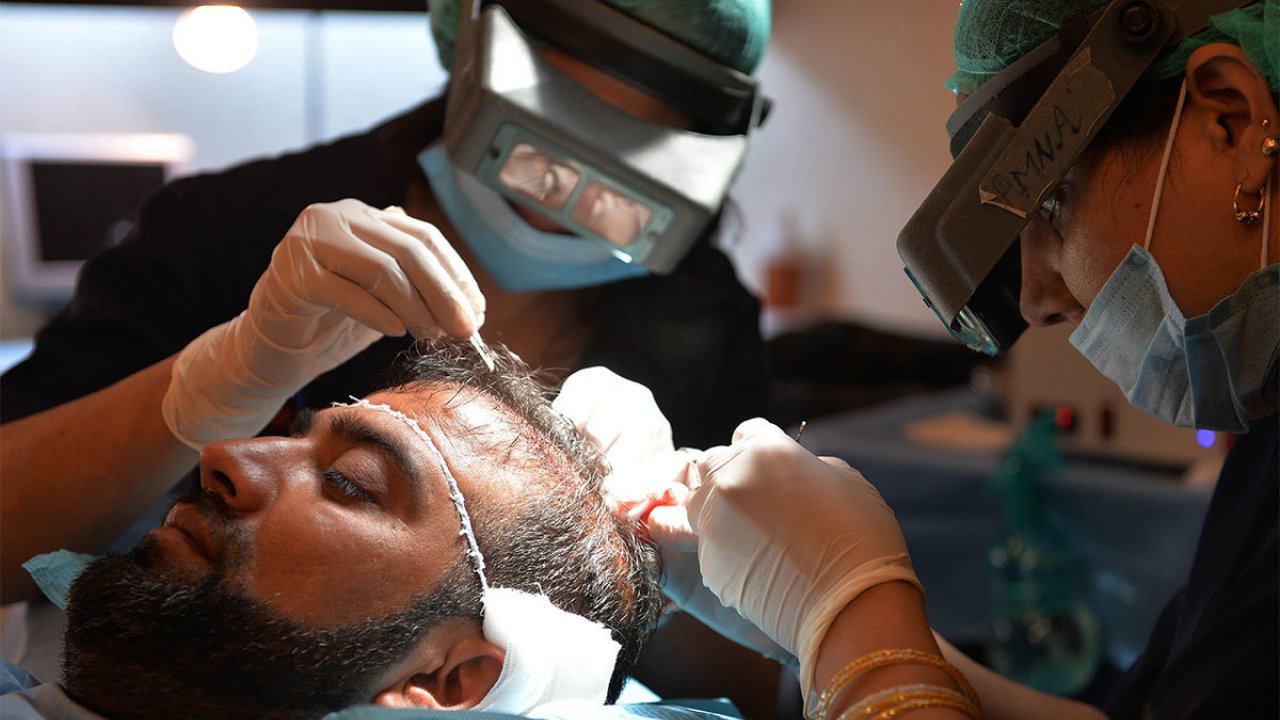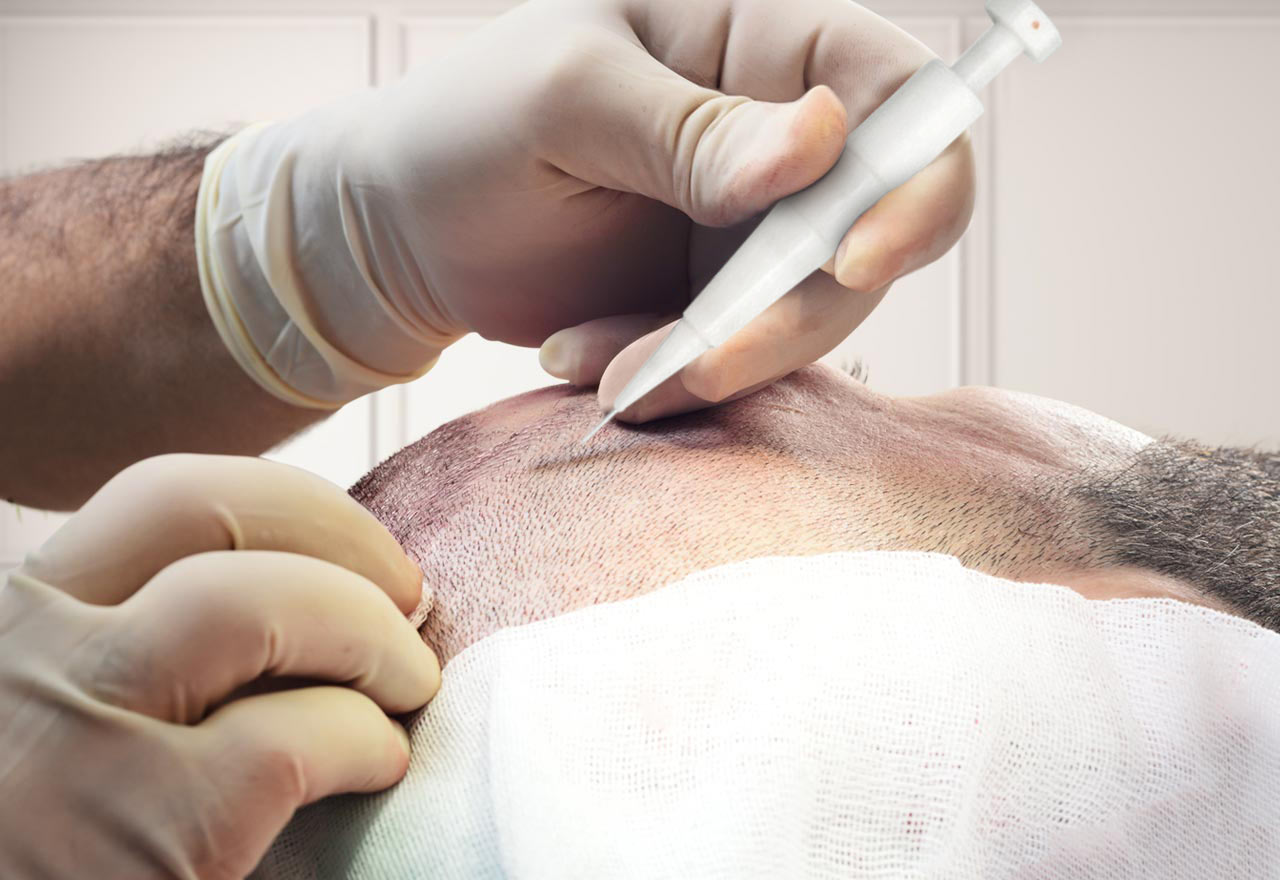Are you tired of feeling self-conscious about your thinning hair? Do you miss the confidence that comes with a full head of hair? Look no further than DHI Hair Transplant – the modern way to get natural-looking hair. Say goodbye to outdated methods and hello to a new, innovative approach that will leave you looking and feeling like yourself again. Keep reading to learn all about this revolutionary procedure!
Table of Contents
What is DHI Hair Transplant?
If you’re looking for a natural-looking hair transplant, DHI may be the right method for you. DHI, or Direct Hair Implantation, is a minimally invasive hair transplant procedure that can give you impressive results.
In DHI, individual hairs are extracted from the donor area and then transplanted into the recipient area. This ensures that each hair follicle is transplanted with its own blood supply, which helps to promote growth.
DHI is also unique in that it uses a special device to create recipient sites for the hair follicles. This device creates very small punctures in the skin, which helps to minimize scarring.
The whole procedure is typically completed in one day, and you can expect to see results within a few months. If you’re looking for a natural-looking hair transplant that doesn’t require a lot of downtime, DHI may be the right choice for you.
Advantages of the DHI Method
The DHI method has several advantages over other hair transplant methods. First, it is a minimally invasive procedure that does not require stitches or a large incision. Second, the DHI method preserves the natural structure of the hair follicles, which leads to more natural-looking results. Third, the recovery time is shorter with the DHI method, and patients can typically return to their normal activities within a few days. Finally, the DHI method is less likely to cause scarring or other side effects than other hair transplant methods.
The Technology Behind DHI Hair Transplant
The DHI hair transplant procedure is a minimally invasive surgery that uses the latest in medical technology to give patients natural-looking results. Here’s a look at the technology behind this popular hair restoration procedure.
DHI stands for Direct Hair Implantation. This technique was developed by Dr. Paraskevas, a hair transplant surgeon in Greece. The DHI hair transplant procedure is unique because it does not require stitches or staples, and there is no linear scarring.
Instead of making an incision in the scalp, as is done in traditional hair transplants, the DHI surgeon makes very small holes in the skin. Then, using a special tool, they implant each individual hair follicle into these tiny holes.
This technique allows for more precision and control when placing each follicle, resulting in a more natural-looking outcome. It also minimizes trauma to the surrounding tissue, which helps speed up healing and recovery time.
 Before and After Results
Before and After Results
When it comes to hair transplants, the results are everything. You want to see a noticeable difference in your before and after photos, and with DHI, you will. This modern method of hair transplantation uses individual follicular units that are extracted from the donor area and then implanted into the recipient area. This results in a much more natural-looking outcome, as the follicles are placed in their natural direction of growth. Plus, DHI offers a minimally invasive technique that reduces trauma to the surrounding tissue and speeds up healing time.
Cost of Hair Transplantation with DHI
Hair transplantation is a surgical procedure that involves taking hair follicles from one part of the head and transplanted to the balding or thinning areas. The cost of hair transplantation with DHI can range from $4,000 to $15,000. The cost will depend on the number of grafts needed and the type of surgery performed.
Risks and Side Effects of DHI Hair Transplantation
DHI hair transplantation is a relatively new procedure and as such, there is limited data on its risks and side effects. However, the procedure is considered to be generally safe and effective with few reported side effects. The most common side effect is temporary swelling and bruising of the scalp, which typically resolves within a week. Other potential side effects include:
– Infection
– Bleeding
– Scarring
– Numbness or tingling of the scalp
– Allergic reaction to the anesthesia or other medication used during the procedure
As with any surgical procedure, there are always risks involved. It is important to discuss these risks with your doctor prior to undergoing DHI hair transplantation.
Alternatives to the DHI Method
There are a few alternatives to the DHI method that you may want to consider if you are looking for a hair transplant. One option is the FUE method, which is similar to DHI but uses a different type of instrument to harvest the grafts. Another option is the strip method, which involves removing a strip of skin from the back of the head and then stitching the incision closed. This method can be more invasive and require more recovery time than FUE or DHI.
Conclusion
DHI hair transplant is a modern method of restoring natural-looking hair. It can provide longer lasting results than traditional methods, and it is also less invasive and more comfortable for the patient. If you are looking for an effective way to get back your full head of hair, then DHI may be the right choice for you. With its innovative technology, experienced surgeons, and natural results, it could help you regain the confidence that comes with having a healthy head of hair.
You May Also Like:The Essential Vitamins You Need After a Hair Transplant


